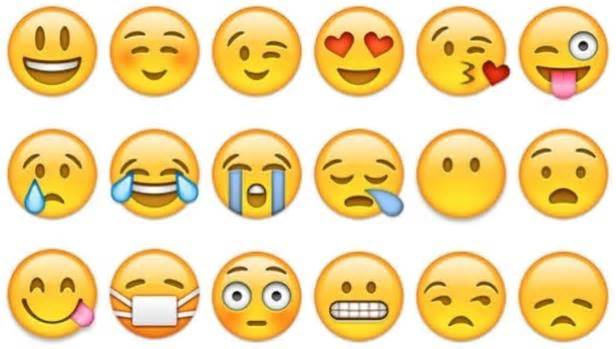It was once dubbed “penmanship for illiterates.†But emoji use has become so integral to the maintstream culture that it now has its own feature film (the widely panned Emoji Movie, released earlier this month).
The practice of punctuating your digital communications with the little symbols has rocketed so steeply in recent years that 92 per cent of the world’s 3.2bn internet users admit to it. Emojis have even been cited - successfully - in courtrooms from Israel to France as evidence of intent.
For anyone who’s managed to avoid the phenomenon, emojis are the pictorial symbols so liberally scattered through our virtual conversations.Â
{loadmodule mod_banners,nativeads}
These icons range from the expressive - yellow cartoonish faces crying with laughter, looking angry, happy, sad and so on - to the figurative - a dancing lady in a red dress, hands clasped in prayer; an avocado; a pizza slice - to the scatalogical - see the smiley pile of excrement emoji for further elucidation. Now numbering more than 2,600, they have somehow become an essential part of modern discourse, with tens of billions traded online every day.
Far from being the preserve of pre-pubescent girls, their use is becoming near-universal, even spilling over into the workplace since they were automatically loaded onto Apple users’ desktops in 2011. One American study found that 76 per cent of respondents had sent the symbols to a colleague in a work email.
It is in this context that the world’s first “emoji translator†has been hired. Keith Broni, 27, was appointed by London-based consultancy firm Today Translations earlier this year to iron out businesses’ use of Unicode’s pictorial language. When companies are unsure as to whether communications containing a winking face emoji will come off as cheeky, or just plain charmless, they give Broni, from Dublin, a call.
“You don’t want to try to use the power of emoji and have it backfire,†he says. “In interpersonal communications, [using them incorrectly] can be confusing or even contradictoryâ€; for brands hoping the images will make them look relevant, failure to strike the right note “will look amateurish†and “like a corporate cash-in.â€
Broni, who beat 500 other applicants to his position, is writing a guide to deploying emojis. “Five years ago, I would have said avoid emoji to your boss in work emails,†he says. Today, things are different. “They’re indicators of emotional expression and an attempt to generate a sense of comradeship within a relationship.â€
Though he remains reassuringly opposed to kicking off work correspondence with a breaded prawn emoji, responding in non-verbal kind to a boss who has introduced emojis into the conversation is, apparently, perfectly acceptable.
Corresponding with solely a large chunk of words “can be read as quite cold,†Broni adds, “and a boss misinterpreting what you’re saying as negative is even more embarrassing†than an ill-timed smiley face.
There are no-nos, of course: sending aubergines or peaches (commonly used to represent phalluses and bottoms); slinging off too many emojis at once; or using one to communicate with an international colleague for whom the image might represent something entirely different (the thumbs up is offensive in Middle Eastern culture; the hand wave is deemed dismissive in China).
The practice still has its detractors, many of whom argue that emojis are a catalyst for the degradation of our language. Dr Arik Cheshin, an assistant professor at the University of Haifa’s Department of Human Services, co-authored a paper on the “dark side of the smileyâ€. His study of emoji use in 29 countries surmised that sending an emoji straight off the bat with a new colleague can never end well, appearing too forced a rendering of a natural human greeting. “When you meet somebody for the first time and they smile, you don’t assume they’re being ingratiating,†he said. “An emoticon is calculated.â€
His study of emoji use in 29 countries surmised that sending an emoji straight off the bat with a new colleague can never end well, appearing too forced a rendering of a natural human greeting. “When you meet somebody for the first time and they smile, you don’t assume they’re being ingratiating,†he said. “An emoticon is calculated.â€
Others posit that, far from dumbing us down, being well-versed in emoji is effectively the same as being bilingual. Such is the view of Vyvyan Evans, a former professor at the University of Bangor and writer of the Emoji Code, who argues that flitting between the verbal and pictorial requires the brain to engage in the same degree of “code switching†required by someone who speaks two languages.
“Emojis are really powerful tools,†Broni says. “They’re a valid form of communication that need to be taken seriously.â€
The Telegraph
Â





